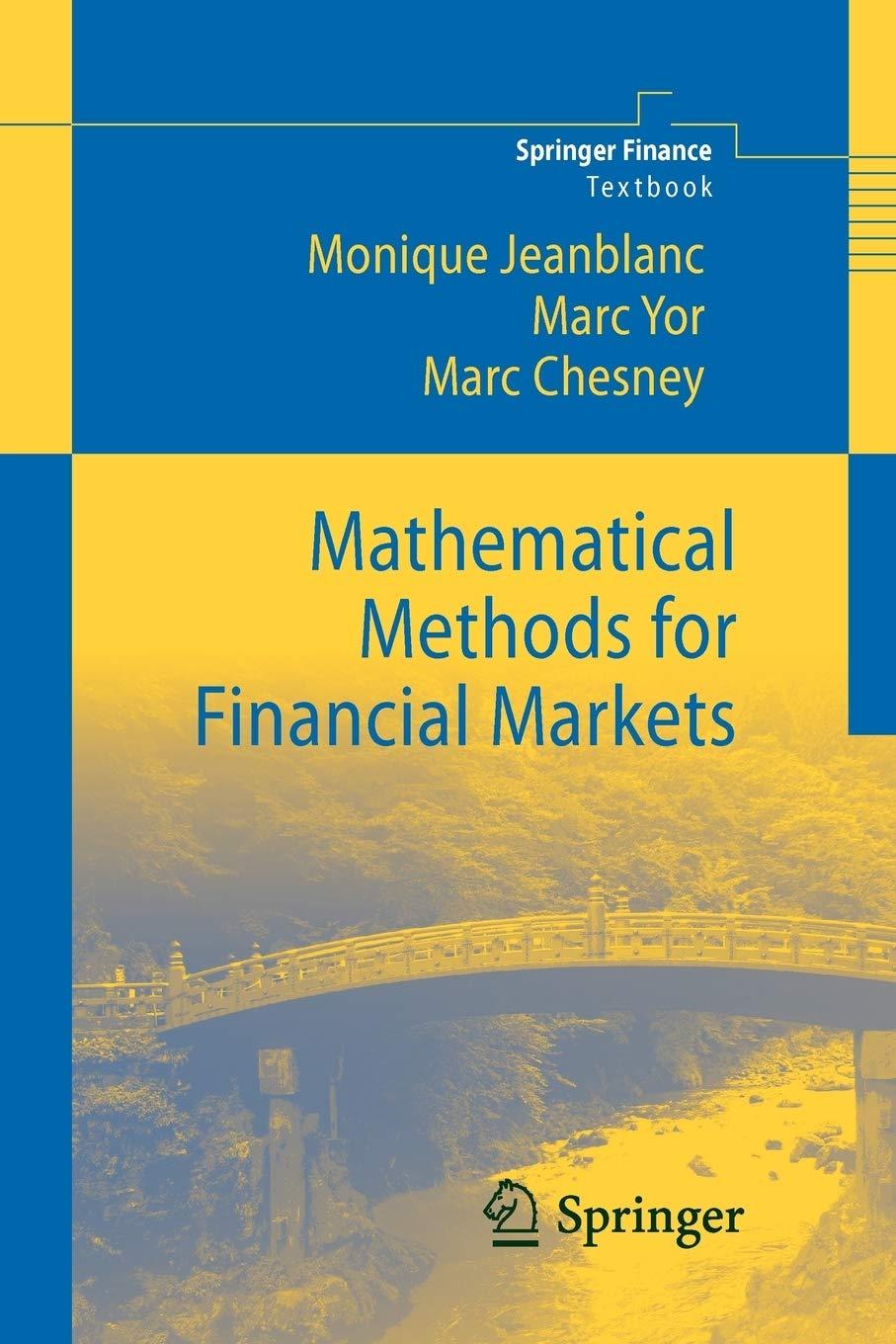Let (R) and (R) be two independent (mathrm{BES}^{3}) processes. Prove that the filtration generated by the process
Question:
Let \(R\) and \(R\) be two independent \(\mathrm{BES}^{3}\) processes. Prove that the filtration generated by the process \(Y_{t}=R_{t}^{-1}-\widetilde{R}_{t}^{-1}\) is the filtration generated by the processes \(R\) and \(\widetilde{R}\).
Indeed, the bracket of \(Y\), i.e., \(\int_{0}^{t}\left(\frac{1}{R_{s}^{4}}+\frac{1}{\widetilde{R}_{s}^{4}}\right) d s\) is adapted w.r.t. the filtration \(\left(\mathcal{Y}_{t}, t \geq 0\right)\) generated by \(Y\). Hence the process \(\left(\frac{1}{R_{t}^{4}}+\frac{1}{\widetilde{R}_{t}^{4}}\right)\) is \(\mathcal{Y}\)-adapted. Now, if \(a\) and \(b\) are given, there exists a unique pair \((x, y)\) of positive numbers such that \(x-y=a, \quad x^{4}+y^{4}=b\) (this pair can even be given explicitly, noting that \(\left.x^{4}+y^{4}-(x-y)^{4}=2 x y\left(x y-2(x-y)^{2}\right)\right)\). This completes the proof.
Step by Step Answer:

Mathematical Methods For Financial Markets
ISBN: 9781447125242
1st Edition
Authors: Monique Jeanblanc, Marc Yor, Marc Chesney





